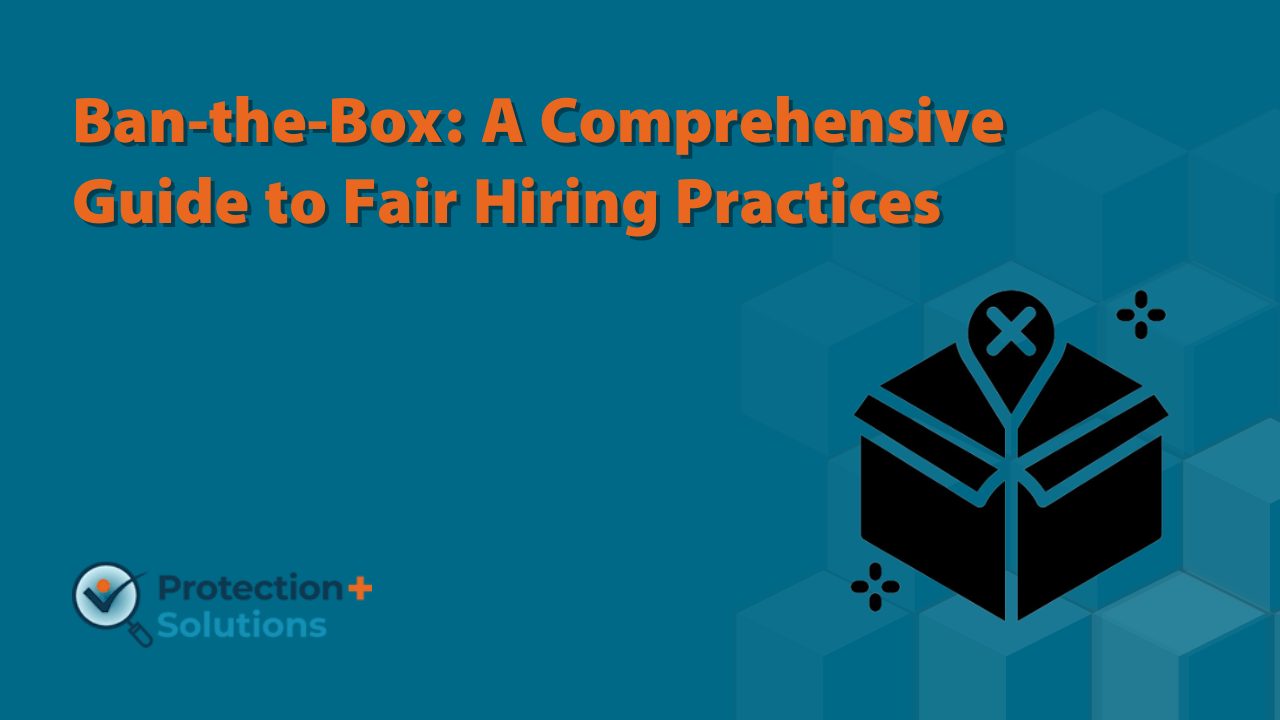Ban-the-Box: A Comprehensive Guide to Fair Hiring Practices

What Does “Ban-the-Box” Mean?
“Ban-the-Box” refers to a hiring policy that removes the checkbox asking job applicants if they have a criminal record from initial job applications. This change aims to give applicants a fair chance to be evaluated based on their skills and qualifications before their criminal history is considered.
The Origins of the Movement
The Ban-the-Box movement began in the early 2000s, led by grassroots organizations advocating for fair hiring. It started with local campaigns and gradually expanded to state and national levels.
Why Ban-the-Box Matters
Reducing Employment Discrimination
For many, a criminal record becomes a permanent barrier to employment. Ban-the-Box helps reduce that bias by ensuring employers first see the person, not the past mistake.
The Impact on Formerly Incarcerated Individuals
Employment is a major factor in preventing repeat offenses. By delaying questions about criminal history, Ban-the-Box policies allow applicants to demonstrate their value before being judged.
How Ban-the-Box Works
Removing the Criminal History Question
Under Ban-the-Box, job applications cannot include a criminal history checkbox. Employers can still ask about it later in the hiring process, but not during the initial application stage.
When Employers Can Legally Ask About Criminal Records
In most jurisdictions, employers can inquire after an interview or conditional job offer. This ensures the conversation happens in a more balanced context.
History and Growth of the Ban-the-Box Movement
Early Adopters and Key States
Hawaii became the first state to implement Ban-the-Box in 1998. Other states soon followed, especially those with strong advocacy groups.
Expansion Across the U.S.
Today, over 35 states and 150+ cities/counties have adopted some form of Ban-the-Box legislation.
International Adoption
Countries like the UK and Canada have also implemented similar fair-chance hiring policies.
Benefits of Ban-the-Box Policies
Promoting Diversity and Inclusion
Ban-the-Box levels the playing field for people from marginalized communities disproportionately affected by the justice system.
Economic Benefits for Communities
Employment for formerly incarcerated individuals boosts tax contributions and reduces reliance on public assistance.
Reducing Recidivism Rates
Having a stable job significantly decreases the chances of re-offending.
Challenges and Criticism of Ban-the-Box
Concerns from Employers
Some employers worry about safety, liability, or the cost of rehiring if things go wrong.
Potential for Unconscious Bias
Studies suggest that if employers suspect applicants have records but can’t ask upfront, they may rely on stereotypes.
Legal Gray Areas
Ban-the-Box laws differ between states and cities, creating confusion for multi-state employers.
Ban-the-Box Laws by State
States with Statewide Laws
California, Illinois, New Jersey, and many others have statewide laws covering public and/or private employers.
Local Ordinances and City Rules
Cities like New York City and Philadelphia have their own expanded Ban-the-Box rules that go beyond state requirements.
How Employers Can Comply with Ban-the-Box
Updating Job Applications
Remove any criminal history checkboxes from application forms.
Training Hiring Managers
Educate staff on when and how to ask about criminal history legally.
Ensuring Compliance with State and Federal Laws
Stay updated with local, state, and federal guidelines to avoid penalties.
Success Stories and Case Studies
Companies Leading the Way
Major corporations like Target, Walmart, and Starbucks have voluntarily adopted Ban-the-Box nationwide.
Individual Success Stories
Many individuals have gone from prison to thriving careers thanks to fair-chance hiring.
Ban-the-Box and the Future of Hiring
Trends in Fair-Chance Hiring
The momentum is shifting toward a broader fair-chance hiring movement, which includes job training and support services.
Technology’s Role in Inclusive Recruitment
AI-based hiring platforms can help eliminate bias—if designed responsibly.
Conclusion
Ban-the-Box isn’t just a checkbox removal—it’s a shift toward giving people a second chance. While it’s not without its challenges, it represents progress toward fairer, more inclusive hiring practices.

